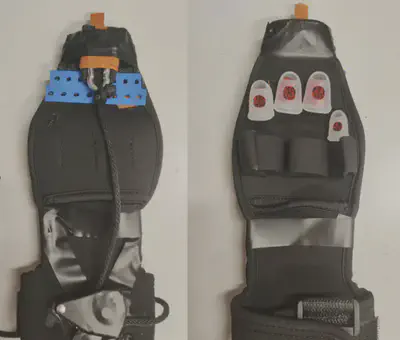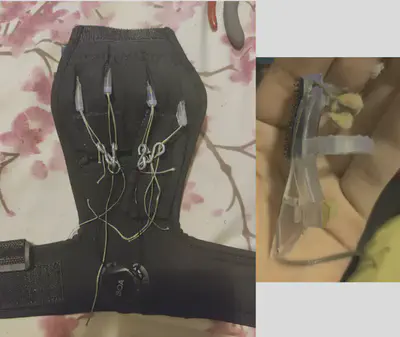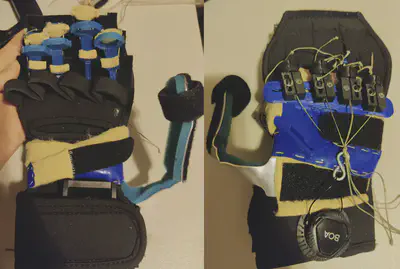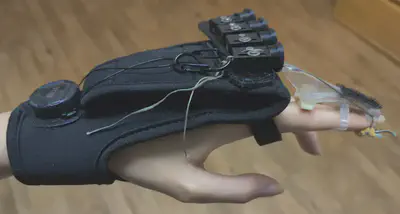Passive MyHand
Initial Motivations and Goals
Following the work on MyHand-SCI, we’ve decided to work on a passive (purely mechanical) version of this device for opening the hands of stroke patients. This is because many individuals that would require such a device want to be able to do tasks in the kitchen and bathroom that requires being around water. They want to be able to interact with their environment to wash dishes and hold shower bottles in the shower among others. This is not possible if the orthosis is actuated with a motor and is connecting to various electronics. Individuals also expressed a want for adevice that is less robotic and bulky in feel. Something that is more lightweight and minimizes fatigure while being comfortable. Something we also wanted to consider was the ability for a person to put the device on and operate it one handed. This would increase a user’s ability to be independent. The passive MyHand aims to address these goals.
Iteration 1

Iteration 2

Iteration 3

The previous iteration had proper separation via the splints however, further routing direction long the tendons was needed to properly pull the fingers open. We prototyped a channel component from older projects to test how proper separation would affect the motion of the fingers. We saw significant improvement in the ability of the ratchet to open the fingers.
Iteraction 4

This is the most recent version of the orthosis with more updates to come!